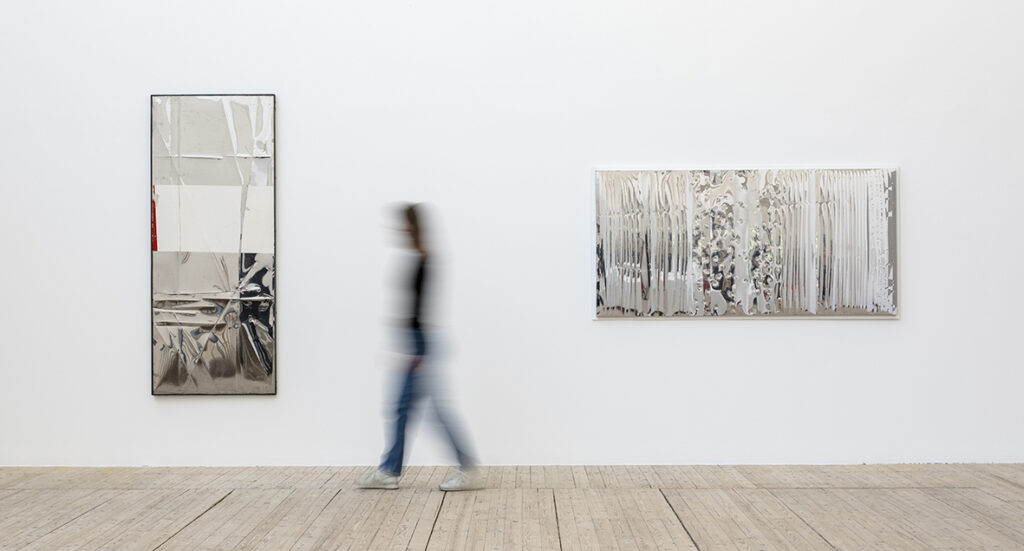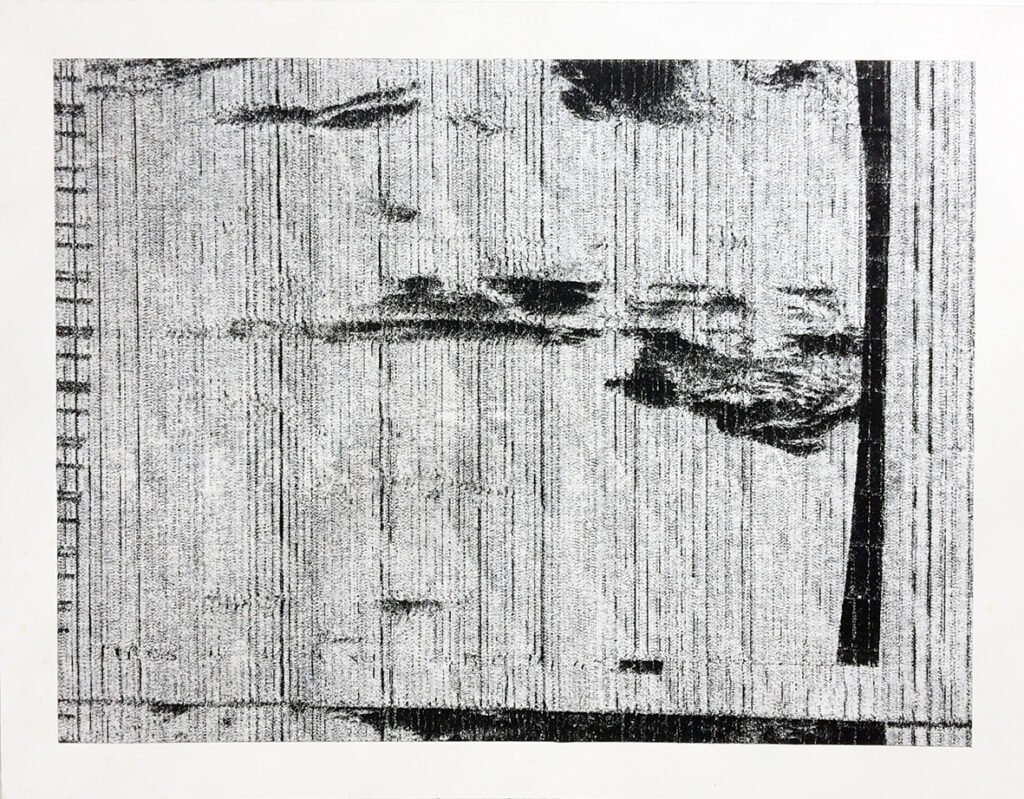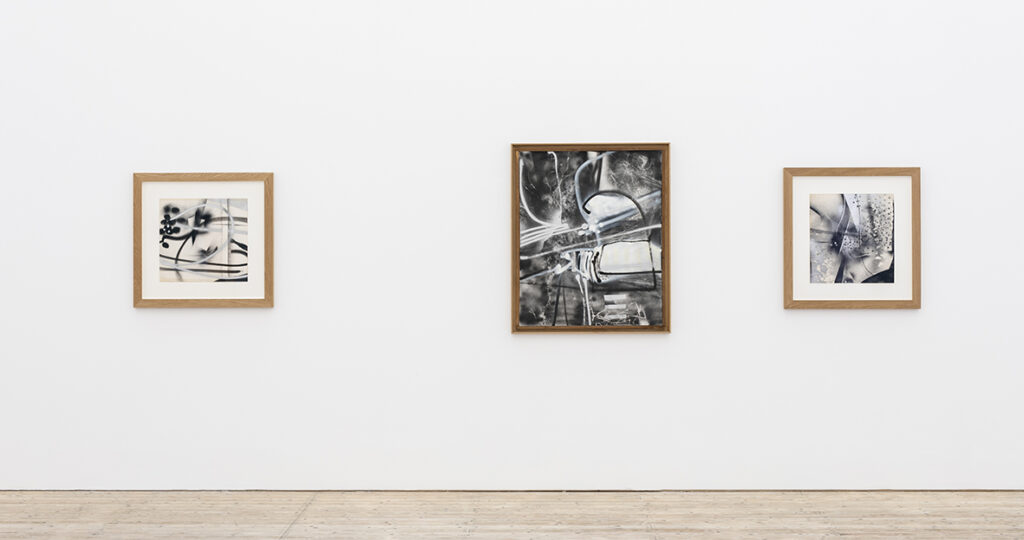
Lars Fredrikson
24.5–24.8.2025
Lars Fredrikson (1926–1997) is largely unknown in Sweden today but in the 1960s and ’70s he was a pioneer with his experimental investigations of space. This exhibition presents his extensive artistic oeuvre, which encompasses drawing, painting, graphics and sculpture. Fredrikson surprises by pushing the boundaries of these media. How can a painting cease to be an image? How can stainless steel, with its mirror-like surface, create spatiality? Can a sculpture lack all physical material?
Weekend seminar (in English) on Lars Fredrikson August 23–24th
Lars Fredrikson was born in Stockholm and studied chemistry and electronics as a young man. At the same time he became interested in painting and how to use art to explore issues of time and space in other ways. He was inspired early on by Eastern philosophy and Zen Buddhism, attended art school in Paris for a while, and settled permanently in France in 1960.
Technology and art are two key aspects of his artistic oeuvre. He invented and developed his own techniques to create works that challenge us in various ways. In the period from 1965 to ’68, in the borderland between painting and sculpture, he produced a series of tactile kinetic works in which the white canvas is pushed out and becomes three dimensional, only to return to its two-dimensional surface a moment later. In other works he made radio-, light- and sound waves visible and used them in surprising new ways. At a group exhibition in Tokyo in 1969 he presented for the first time his converted television set – the psycho pulse-generator – which uses electromechanical waves to create flowing light drawings on the screen. Somewhat later, in his ‘fax drawings’ he transformed radio waves into images using a fax machine that he had converted into a drawing machine.
Fredrikson began working with sound as early as the late 1960s. Sound enabled him to create sculptures without any body, any visible material. In his sound works he often uses the body’s own wave movements – the frequencies of heartbeats, brain waves and blood flows – and reveals how our inner space interacts with our outer space and becomes part of how we experience the world around us. In 1971 at Villa Arson in Nice he established the first sound studio at a French art school and, as a teacher there, he came to influence generations of sound artists. He simultaneously explored the spatiality of paper in his engravings and in his many book projects with French poets such as Claude Royet-Journoud, Edmond Jabès and Anne-Marie Albiach. Fredrikson used the book as space, applying methods derived from his work with sculpture and engraving. Sometimes his interventions are so minimal that it is difficult to detect them.
Lars Fredrikson was particularly interested in our perception of space – spatiality – and in various ways created new relationships between artworks and space. At the 1972 exhibition Espaces Virtuels (Virtual Spaces) at the Fondation Maeght in the south of France, he displayed a series of stainless-steel reliefs that function as mirror surfaces, refracting waves of light and thereby transforming and deconstructing the space. These works are created in real time by the presence and movement of the visitor. At Malmö Konsthall his steel reliefs are a central feature and function as a common thread throughout the exhibition. They reflect, disrupt and involve the visitor and show us that perception is something fluid, dependent on time and the movement of the body in space.
In his works Fredrikson searches for a plasticity, a spatiality, that can disrupt and overturn how we usually view our surroundings and thereby sharpen our sensitivity to and perception of what is around us. Encountering one of Lars Fredrikson’s works is a physical experience that demands both presence and time from the visitor. For him, the important thing is not to see the art but to sense it, to listen to it intensely with the whole body.
The exhibition is produced in collaboration with Sara Arrhenius, Director of the Institut Suédois in Paris, Lars Fredrikson Estate, Léa Dreyer from the University of Paris, and Jonas (J) Magnusson, editor-in-chief of OEI. The exhibition program is made possible with the support of Institut Français de Suède.
Parallel to the exhibition, the presentation “Malmö Konsthall – 50 Years” is displayed in a section of the exhibition hall. Read more about the presentation here.


Installation view Malmö Konsthall 2025.
Photo: Helene Toresdotter

“Fax”, 1980.
Drawings recorded on electro-sensitive paper. Courtesy Lars Fredrikson Estate & Galerie In Situ – fabienne leclerc, Paris

Photo: Helene Toresdotter

Private collection, Finland. Photo: Helene Toresdotter

Courtesy Lars Fredrikson Estate & Galerie In Situ, Paris